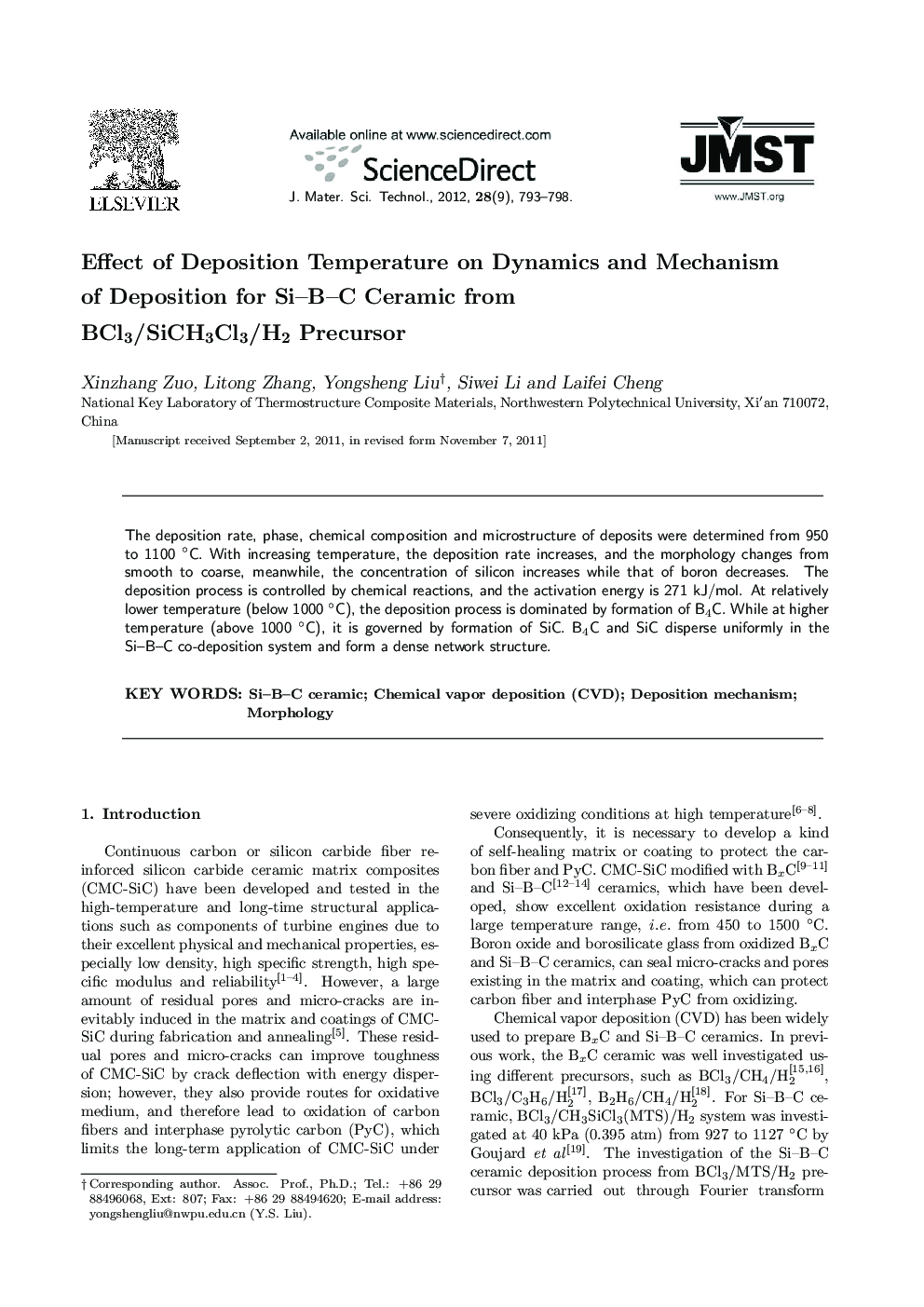| Article ID | Journal | Published Year | Pages | File Type |
|---|---|---|---|---|
| 1556961 | Journal of Materials Science & Technology | 2012 | 6 Pages |
Abstract
The deposition rate, phase, chemical composition and microstructure of deposits were determined from 950 to 1100 °C. With increasing temperature, the deposition rate increases, and the morphology changes from smooth to coarse, meanwhile, the concentration of silicon increases while that of boron decreases. The deposition process is controlled by chemical reactions, and the activation energy is 271 kJ/mol. At relatively lower temperature (below 1000 °C), the deposition process is dominated by formation of B4C. While at higher temperature (above 1000 °C), it is governed by formation of SiC. B4C and SiC disperse uniformly in the Si-B-C co-deposition system and form a dense network structure.
Related Topics
Physical Sciences and Engineering
Materials Science
Materials Chemistry
Authors
Xinzhang Zuo, Litong Zhang, Yongsheng Liu, Siwei Li, Laifei Cheng,
